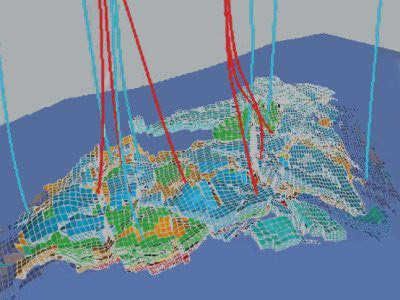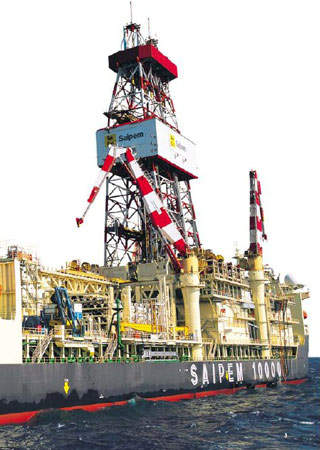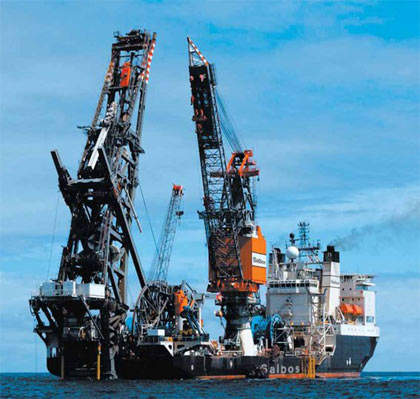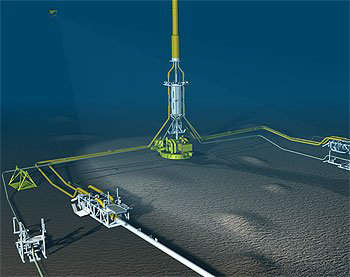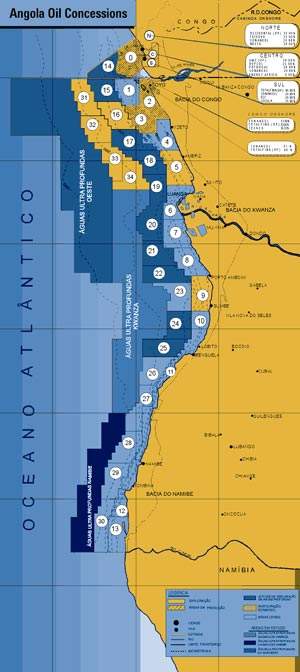The Rosa field lies in block 17, 135km off the coast of Angola in water depths of 1,350m. It was discovered in January 1998 and came onstream in June 2007. The field is operated by Total E&P Angola with 40% interest, with Sonangol being the block 17 concessionaire.
Other partners are Esso Exploration Angola (block 17) Limited (20%), BP Exploration (Angola) Ltd. (16.67%), Statoil Angola Block 17 AS (13.33%) and Norsk Hydro Dezassete (10%). Rosa, with proven and probable reserves amounting 370 million barrels will maintain the FPSO’s production plateau at 250,000 barrels per day (bpd) until early in the next decade.
Block 17 is composed of four major zones: Girassol and Dalia, both in production; Pazflor is in the bidding process before sanction and CLOV, a fourth major production area based on the Cravo, Lirio, Violeta and Orquidea discoveries, whose development is currently being studied. Future production from these fields will come in addition to the 500,000bpd that are currently pumped from Girassol and Dalia structures on the block 17.
ROSA DEVELOPMENT
Rosa is located 15km away from the Girassol Floating Production Storage and Offloading (FPSO) vessel and uses this facility as a development hub. This makes it the first deepwater field of this size to be tied back to such remote installation and in such water depths. The development will comprise 25 wells, including 11 for water injection and 14 producers, which will be tied into four manifolds.
The subsea installation consists of 64km of insulated production flowlines (pipe in pipe) and of 40km of water injection lines linking Rosa to the Girassol FPSO. An innovative riser tower docked nearby the FPSO takes the fluid over 1,200m from the sea floor up to the surface.
The project was sanctioned in mid-2004 and the drilling programme commenced in December 2005. It is expected to run until 2008. The work was carried out using the ultra deepwater drillship Saipem 10,000, however from July 2007, this was assisted by the Pride Angola. Rosa will be produced from three sand channels, Rosa D, Rosa D west and Rosa E.
SUBSEA PRODUCTION SYSTEM
The main work for the Subsea Production System (SPS) was awarded to FMC in a EPC (Engineering, Procurement and Construction) contract. The scope of work included 13 production trees rated to 5,000psi and ten injection trees.
The christmas trees and wellhead guide bases were installed using the drilling rig as the wells were being drilled, while the manifolds were installed by Saipem using its Saipem FDS DP monohull crane and pipelay vessel.
FMC’s contract also included the flowlines and umbilical connection systems. There are two loops, each having two production manifolds. One loop for reservoir D and the other is for D west.
There is also a multiplexed electro hydraulic production control system and an acoustic monitoring system. FMC subcontracted Roxar for the multiphase flow meter on each well to monitor the flowrates.
In order to receive the Rosa production, 5,600t of structure and equipment was installed on the FPSO. During the whole period, the treatment of the Girassol oil continued and only some scheduled production shutdowns were required.
With Rosa onstream, all of the produced water from the Girassol, Jasmim and Rosa fields will be reinjected in the reservoirs, thus resulting in produced water not being discharged to the sea. In addition, Total is reducing greenhouse gas emissions by using an innovative process that inerts and recovers gaseous effluent from the FPSO tanks.

